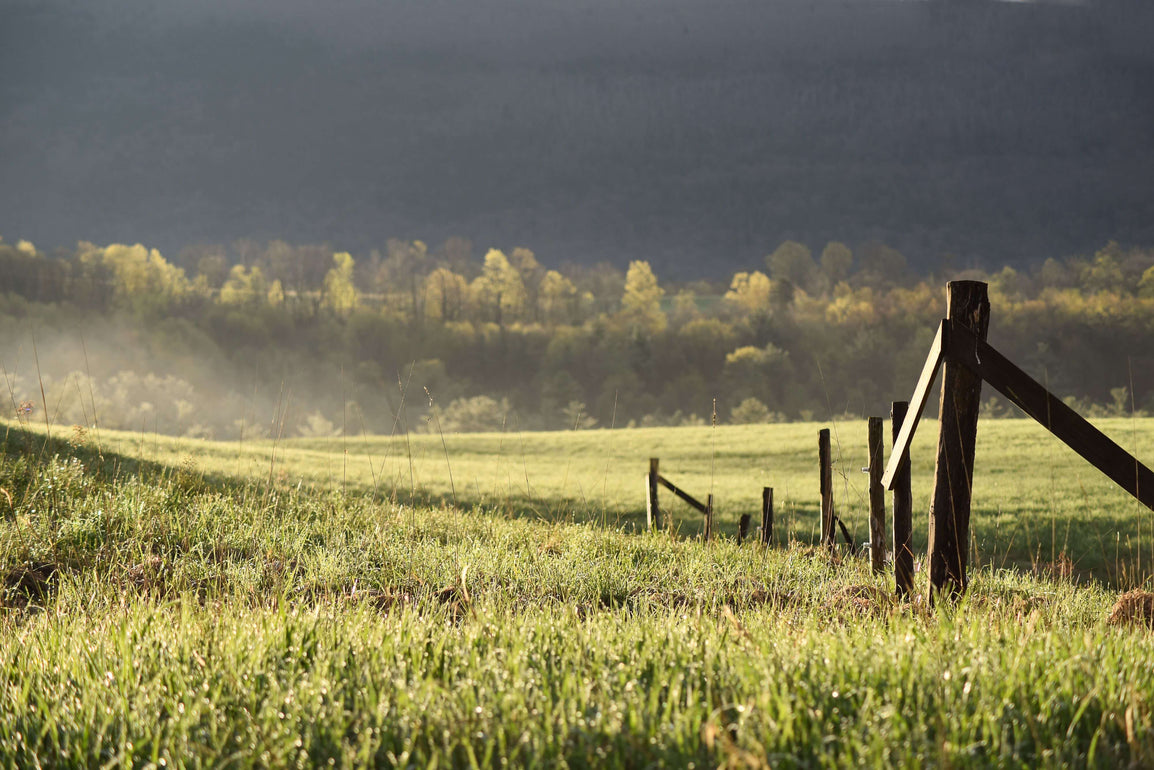THE CARNIVORE DIET BENEFITS




The age-old art of agriculture is in the midst of a critical revolution. As we face mounting global challenges such as water scarcity and a growing population, the race is on to discover the most sustainable, efficient, and harmonious ways of producing our food.
Two approaches have risen to the forefront: regenerative agriculture vs agroecology. These paradigms may seem similar in their eco-centric visions, but they are distinct in their methodologies and objectives. So, how are they different? And, which is better - if either?
In this article, we'll dissect and distill the intricacies of both these approaches, critically examining their principles, benefits, and implications for the future of farming.
From the microorganisms enriching the soil to the consumers relishing the fruits of these practices, we'll traverse every facet of these agricultural approaches to find out which holds more potential. But, before we can compare and contrast these side by side, we need to set the stage by defining them separately.
What’s the Difference Between Regenerative Agriculture vs Agroecology?
Just as with our conversation on permaculture vs regenerative agriculture, regenerative agriculture vs sustainable agriculture, or even keto vs carnivore diet for that matter, it’s important to consider the two sides of the coin on their own before putting them up against one another.
So, with that being said, what is regenerative farming? Or, perhaps more specifically, how does regenerative agriculture work? Let’s take a look.
What is Regenerative Agriculture?
Regenerative agriculture is a system of farming principles that prioritizes the health and enrichment of the soil. It views farming as a holistic process, where everything from the microorganisms in the soil to the plants and animals above it form a synergistic system.
This approach operates on the principle of restoring, conserving, and enhancing natural resources by implementing practices that increase biodiversity, enrich the soil, improve watersheds, and enhance carbon sequestration. It works on the concept of a closed-loop system, where waste is minimized and all outputs feed back into the system to create a self-sustaining cycle.
There are a wide array of regenerative farming techniques such as cover cropping, no-till farming, organic production, and managed grazing of livestock. The ultimate goal is not just to produce food but also to improve the ecosystem services that sustain food production, creating a healthier planet and more nutrient-dense food.
We’ll talk more about the benefits of regenerative farming later on - but at this point, it’s time we brought in the other half of this food supply battle: agroecology.
What is Agroecology?
Agroecology, on the other hand, is both a field of scientific research and a set of farming practices.
As a field, it studies how different components of an agroecosystem interact with each other. As a set of practices, it seeks to apply ecological principles to the design and management of sustainable agroecosystems.
A crucial aspect of agroecology is the concept of creating and fostering diversity at every level, from genetic to landscape. It views farms as ecosystems and encourages the interplay between plants, animals, humans, and the environment. It's also inherently a social movement that emphasizes local and indigenous knowledge, community-led decision-making, and social justice.
Agroecology encourages strategies like intercropping, traditional seed use, and natural pest management. It opposes industrial farming and monocultures, and it aims to promote resilience, sustainability, and autonomy in food systems.
Regenerative Agriculture vs Agroecology: Which is Better for Society, Farmers, and Everyone in Between?
In essence, while both regenerative agriculture vs agroecology share the common aim of sustainable and ecologically sound farming, they diverge in their focus and approach.
That being said, which is better for society, farmers, and everyone in between: agroecology vs regenerative agriculture?
In the following sections, we'll delve into a side-by-side comparison of these two methodologies, their societal implications, and our viewpoint on which comes out on top. First, let’s look at their principles and practices so you can gain a better understanding of where they differ.
Comparing the Principles and Practices
In terms of principles, both regenerative agriculture and agroecology share a common vision - creating more sustainable and ecologically-friendly farming systems that benefit not only the producers but also the consumers and the environment.
Both methodologies place a strong emphasis on protecting the soil, enhancing biodiversity, and creating self-sustaining systems. However, there are notable differences in the practices they endorse.
Regenerative agriculture is more focused on soil health. Regenerative farmers believe in intervening to regenerate and improve the soil using specific practices such as cover cropping, no-till farming, and rotational grazing. It's a proactive approach that seeks to improve the current state of farmland.
Agroecology, in contrast, seeks to mimic nature and create a balanced ecosystem. The practices endorsed by agroecology include intercropping, traditional seed use, and natural pest management. It's a more passive approach that allows nature to take its course and guide the process.
Analyzing the Environmental Impact
When it comes to environmental impact, both regenerative agriculture and agroecology aim to reduce the negative effects of farming and create systems that are beneficial to the environment. However, they approach this goal differently.
Regenerative agriculture focuses on improving soil health to sequester carbon, reduce erosion, and there are water benefits of regenerative agriculture too. Farmers that follow this philosophy believe in creating a net-positive effect on the environment by taking more carbon out of the atmosphere than it puts in - as explained in our breakdown on regenerative agriculture carbon sequestration.
On the other hand, agroecology focuses on enhancing biodiversity at all levels. It seeks to create a balanced ecosystem where different species interact and support each other, creating a natural balance that reduces the need for external inputs such as pesticides and fertilizers.
While both methodologies can have positive environmental impacts, the effectiveness can vary based on the specific practices implemented and the local environmental conditions. A regenerative farming practice that works well in one region might not be as effective in another, and the same goes for agroecological practices.
Considering the Farmer's Perspective
For farmers, the choice between regenerative agriculture and agroecology may depend on their individual goals, resources, and the context of their farming operations.
Regenerative agriculture can offer a variety of benefits for farmers. It can improve soil health, leading to increased crop yields over time and a more resilient farming system that can better handle droughts and diseases.
It also has the potential for increased profitability, as healthier soils can reduce the need for costly inputs like synthetic fertilizers. As with most inputs in this style, regenerative agriculture fertilizer comes straight from the land itself, or in the case of regenerative cattle farming, the food comes from the land.
However, transitioning to regenerative agriculture can require substantial changes to farming practices and may involve initial costs and a learning curve. So, it’s not something you should do if you’re not in it for the long haul (which, you should be - if that wasn’t already clear).
There’s a much more detailed explanation of regenerative farming profitability in our blog if you’d like to learn more. We also have a thorough guide on how to start regenerative farming.
Agroecology, on the other hand, emphasizes working with local ecosystems and utilizing traditional knowledge and practices. This can be a benefit for farmers who are embedded in their local communities and who want to maintain traditional farming methods.
Agroecological practices may also be more accessible for small-scale farmers or those in developing countries, as they often require less reliance on expensive inputs. However, it may not always provide the increased yields or profitability that can come with the intensive soil management practices of regenerative agriculture.
Evaluating the Consumer Experience
From a consumer perspective, both regenerative agriculture and agroecology have the potential to provide high-quality, nutrient-dense foods.
Foods grown using regenerative agriculture practices can be high in nutrients due to the healthy soils in which they are grown. Some consumers also value the idea of supporting farming practices that are actively improving soil health and sequestering carbon, and are willing to pay a premium for these products.
Similarly, foods grown using agroecological practices can be seen as more "natural" or "traditional", and may be sought out by consumers interested in supporting biodiversity and traditional farming practices. The focus on local and seasonal foods in agroecology can also appeal to consumers interested in eating locally and seasonally.
That being said, either of these approaches is a much better solution to our food supply chain compared to commercial agriculture in its current state.
Which is More Sustainable?
When it comes to sustainability, both regenerative agriculture and agroecology aim to create farming systems that are environmentally, economically, and socially sustainable. However, the ways they go about this can be different.
Regenerative agriculture’s emphasis on soil health can lead to farming systems that are more resilient to weather extremes and disease, potentially making them more environmentally sustainable in the long run. This can be attributed to regenerative agriculture biodiversity.
Economically, the increased yields and reduced input costs associated with regenerative agriculture can contribute to its sustainability. Farms that implement regenerative practices are better suited for the long haul - a core tenant of sustainability.
Agroecology's emphasis on biodiversity and reliance on traditional knowledge and practices can also create sustainable farming systems. The focus on creating a balanced ecosystem can make these systems more resilient in the face of disease and pest outbreaks, contributing to environmental sustainability.
Additionally, by reducing reliance on external inputs, agroecology can also be economically sustainable, particularly for small-scale farmers or those in developing countries.
In the end, the sustainability of either approach depends heavily on the specifics of how it is implemented. Both regenerative agriculture and agroecology have the potential to create sustainable farming systems.
The success of either method, however, will depend on various factors. These include the local context, the commitment & knowledge of the farmers implementing the practices, and the support & value given to these practices by society and consumers.
So, Which is Better: Agroecology vs Regenerative Agriculture?
Deciding which agricultural approach is superior isn't an easy task, as both regenerative agriculture vs agroecology offer significant advantages and have their own merits.
However, if we consider the broader global context - particularly the urgency to preserve our lands and the need for a system that can be applied effectively on a large scale - regenerative agriculture seems to take a slight lead.
Regenerative agriculture provides a robust framework that can be adopted on a wide scale, even on industrial-sized farms. Its core focus on restoring soil health and sequestering carbon aligns closely with the urgent need to address climate change and environmental degradation.
In contrast, while agroecology is highly valuable, particularly in local contexts and for preserving traditional practices, it may not always scale as effectively.
Moreover, from a consumer perspective, regenerative agriculture can have an added appeal. For conscious consumers who wish to use their purchasing power to make a positive impact, buying products sourced from regenerative farms can be a tangible way to contribute.
This is where products like our Carnivore Chips come in. These meat chips are sourced entirely from regenerative farms, providing an easy and delicious way for consumers to support this important shift in agricultural practices.
If you’re looking to learn more about how to support regenerative agriculture, we have a detailed guide on the topic. But, at this point, it’s time we wrapped up this in-depth look at regenerative agriculture vs agroecology.
Final Thoughts on the Agroecology vs Regenerative Agriculture Debate
The comparison between agroecology vs regenerative agriculture is far from a competition. Both approaches share a common goal: to transition from industrial agriculture practices that degrade our environment towards sustainable farming practices that preserve our lands and its inhabitants. Each holds a valuable piece of the puzzle in our journey towards a more sustainable future.
Regenerative agriculture shows promise for large-scale change, with its focus on soil health and carbon sequestration. It's an approach that conscious consumers can actively support – our Carnivore Snax, sourced from regenerative farms, are a prime example of this.
Agroecology, meanwhile, plays a crucial role in preserving biodiversity, local food sovereignty, and traditional knowledge. Its lessons are invaluable for sustainable agriculture at the community level.
In the end, the best solution likely lies in a blend of both philosophies, adapted to local needs and circumstances. Through understanding and supporting these methods, each one of us has a role in shaping a more sustainable food future.























